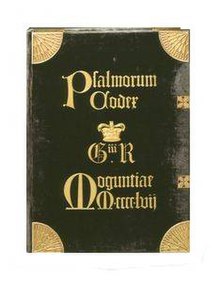Description
The Psalter combines printed text with two-colour woodcuts: since both woodcuts and movable print are relief processes, they could be printed together on the same press. The Psalter is printed using black and red inks, with the smaller initials in red. The larger coloured capitals are done by hand in blue and red inks. [3] Some initials combine printing and hand-drawing, and according to Mayumi Ikeda, some even include elements of intaglio engraving. These capitals were partly the work of the artisan known as the Fust master, who later also worked for Fust and Schöffer on the 1462 Bible. [1] The musical score accompanying the psalms was provided in manuscript, and may have been the model for the type style. [3] Printing in two colours, although feasible on the moveable press of Gutenberg's time (as illustrated by the Mainz Psalter), was apparently abandoned soon afterward as being too time-consuming, as few other examples of such a process are extant. [4]
Two versions were printed, the short issue and long issue. The short has 143 leaves, and the long has 175 and was intended for use in the diocese of Mainz. All surviving copies and fragments are on vellum, and it is not known if any paper copies were printed. [5] At least one copy was still being used in services in a monastery in the mid-eighteenth century. [6]
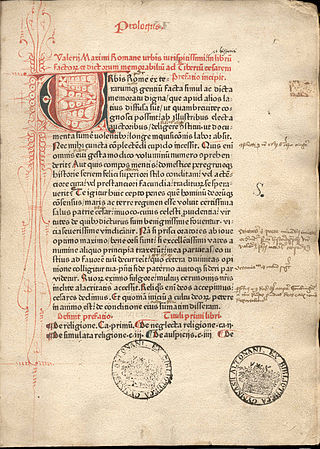
An incunable or incunabulum is a book, pamphlet, or broadside that was printed in the earliest stages of printing in Europe, up to the year 1500. Incunabula were produced before the printing press became widespread on the continent and are distinct from manuscripts, which are documents written by hand. Some authorities on the history of printing include block books from the same time period as incunabula, whereas others limit the term to works printed using movable type.

Johannes Gensfleisch zur Laden zum Gutenberg was a German inventor and craftsman who introduced letterpress printing to Europe with his movable-type printing press. Though movable type was already in use in East Asia, Gutenberg invented the printing press, which later spread across the world. His work led to an information revolution and the unprecedented mass-spread of literature throughout Europe. It had a profound impact on the development of the Renaissance, Reformation, and humanist movements.
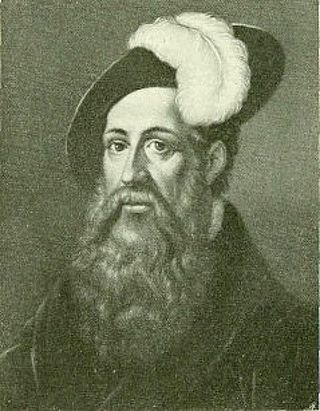
Johann Fust or Faust was an early German printer.

The Gutenberg Bible, also known as the 42-line Bible, the Mazarin Bible or the B42, was the earliest major book printed in Europe using mass-produced metal movable type. It marked the start of the "Gutenberg Revolution" and the age of printed books in the West. The book is valued and revered for its high aesthetic and artistic qualities and its historical significance.
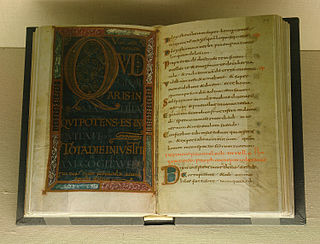
A psalter is a volume containing the Book of Psalms, often with other devotional material bound in as well, such as a liturgical calendar and litany of the Saints. Until the emergence of the book of hours in the Late Middle Ages, psalters were the books most widely owned by wealthy lay persons. They were commonly used for learning to read. Many Psalters were richly illuminated, and they include some of the most spectacular surviving examples of medieval book art.
The Summa grammaticalis quae vocatur Catholicon, or Catholicon, is a 13th-century Latin dictionary which found wide use throughout Latin Christendom. Some of the entries contain encyclopedic information, and a Latin grammar is also included. The work was created by John Balbi, of Genoa, a Dominican, who finished it on March 7, 1286. The work served in the late Middle Ages to interpret the Bible. The Catholicon was one of the first books to be printed, using the new printing technology of Johannes Gutenberg in 1460.

Ulrich Zell was an early printer in Cologne, Germany.

A printer's devil was a young apprentice in a printing establishment who performed a number of tasks, such as mixing tubs of ink and fetching type. Notable writers including Benjamin Franklin, Walt Whitman, Ambrose Bierce, Bret Harte, and Mark Twain served as printer's devils in their youth.

Block books or blockbooks, also called xylographica, are short books of up to 50 leaves, block printed in Europe in the second half of the 15th century as woodcuts with blocks carved to include both text (usually) and illustrations. The content of the books was nearly always religious, aimed at a popular audience, and a few titles were often reprinted in several editions using new woodcuts. Although many had believed that block books preceded Gutenberg's invention of movable type in the first part of the 1450s, it now is accepted that most of the surviving block books were printed in the 1460s or later, and that the earliest surviving examples may date to about 1451.

Peter Schöffer or Petrus Schoeffer was an early German printer, who studied in Paris and worked as a manuscript copyist in 1451 before apprenticing with Johannes Gutenberg and joining Johann Fust, a goldsmith, lawyer, and money lender.

The global spread of the printing press began with the invention of the printing press with movable type by Johannes Gutenberg in Mainz, Germany c. 1439. Western printing technology was adopted in all world regions by the end of the 19th century, displacing the manuscript and block printing.

Albrecht Pfister was one of the first European printers to use movable type, following its invention by Johannes Gutenberg. Working in Bamberg, Germany, he is believed to have been responsible for two innovations in the use of the new technology: printing books in the German language, and adding woodcuts to printed books. The typefaces of Pfister, although similar to Gutenberg's, have their own peculiarities.
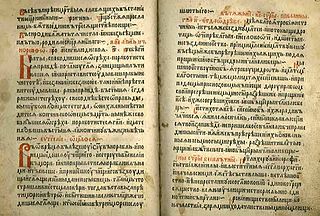
Schweipolt Fiol was a German-born 15th century pioneer of Cyrillic printing. Fiol spent a considerable part of his life in Poland, particularly Kraków, the capital of the Polish Kingdom at the time. The city was famous for its university. The burgeoning of the arts and sciences contributed to the early emergence of book printing here: as early as 1473–1477 there was a print shop in Kraków, which published numerous theological works. The very first book printed in Cyrillic script, Oktoikh (Octoechos), was published by Fiol in 1491 in Kraków.

Heinrich Eggestein is considered, along with Johannes Mentelin, to be the earliest book printer in Strasbourg and therefore one of the earliest anywhere in Europe outside Mainz.
Hans Peter Kraus, also known as H. P. Kraus or HPK, was an Austrian-born book dealer described as "without doubt the most successful and dominant rare book dealer in the world in the second half of the 20th century" and in a league with other rare book dealers such as Bernard Quaritch, Guillaume de Bure and A.S.W. Rosenbach. Kraus specialized in medieval illuminated manuscripts, incunables, and rare books of the 16th and 17th centuries, but would purchase and sell almost any book that came his way that was rare, valuable and important. He prided himself in being "the only bookseller in history...to have owned a Gutenberg Bible and the Psalters of 1457 and 1459 simultaneously," stressing that "'own' here is the correct word, as they were bought not for a client's account but for stock."

The 36-line Bible, also known as the "Bamberg Bible", was the second moveable-type-printed edition of the Bible. It is believed to have been printed in Bamberg, Germany, circa 1458–1460. No printer's name appears in the book, but it is possible that Johannes Gutenberg was the printer.
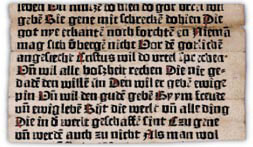
The Sibyllenbuchfragment is a partial book leaf which may be the earliest surviving remnant of any European book that was printed using movable type. The Sibyllenbuch, or Book of the Sibyls, was a medieval poem which held prophecies concerning the fate of the Holy Roman Empire.
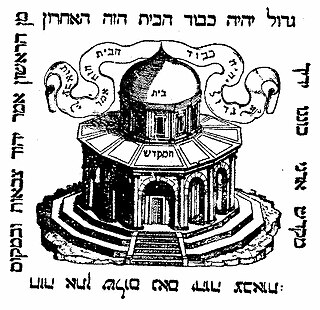
A printer's mark, device, emblem or insignia is a symbol that was used as a trademark by early printers starting in the 15th century.
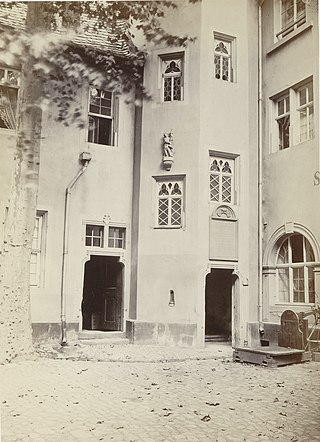
The Humbrechthof, also known as Hof zum Humbrecht, was the building in which Johannes Gutenberg developed his technique of printing with movable metal type and set up his first printing press. It was located in the old town of Mainz. Today, the houses at Schusterstraße 22 and 24 are located on the site.

Peter Schöffer the Younger was a German printer, the son of Peter Schöffer, a former apprentice of Johannes Gutenberg, and a grandson of Gutenberg's financier Johann Fust. He first worked in Mainz, where he set up his first workshop. He was an expert type caster, and his specialty was printing music. Schöffer moved to Worms in 1518, where he printed among other works the Tyndale Bible, which was the first mass-produced English edition of the New Testament, and the first complete German Protestant translation of the Bible. Later in life, he also worked in Straßburg, Venice and Basel.


